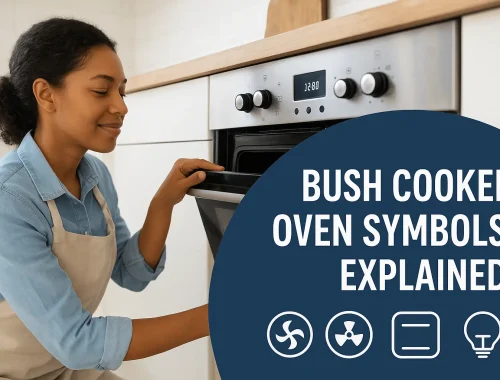
Best Energy-Saving Home Heaters 2025
Keeping your home warm without worrying about sky-high energy bills is something many of us think about, especially during colder months. The good news is that in 2025, heaters are smarter, safer, and far more energy-efficient than they used to be. You don’t need to feel guilty about turning the heat on anymore if you pick the right model for your space.
In this guide, I’ll walk you through the best energy-saving heaters for homes in 2025, explain how they work, and share real-life tips on how to get the most warmth for your money.
I’ll also sprinkle in some personal experiences because, like many families, we’ve struggled with rising energy bills at home. I once bought a bulky old heater thinking it was a good deal, only to regret it later when my electricity bill nearly doubled. That mistake taught me one important lesson: an energy-saving heater isn’t just about comfort, it’s about long-term savings.
Table of Contents
ToggleWhy Energy-Saving Heaters Matter More in 2025
Energy prices have been unpredictable in recent years, and many households are looking for smart ways to stay warm while staying on budget. On top of that, more people want to reduce their carbon footprint.
Modern heaters use better technology:
-
Smart thermostats that adjust heat automatically.
-
Infrared heating that warms objects instead of wasting heat in the air.
-
Ceramic heating elements that spread heat evenly and safely.
-
Eco-modes that save power without making you feel cold.
All of this means your home can stay cozy while your bills stay low.
Which Heater is Best for Energy Saving?
If you’re wondering which heater is best for energy saving in 2025, the answer depends on your space and lifestyle. Let’s break it down.
1. Infrared Heaters – Best for Targeted Heating
Infrared heaters warm people and furniture directly rather than heating the air. That means less wasted energy.
Best for: Small rooms, personal spaces, home offices.
Why it saves energy: It doesn’t waste heat circulating through the air.
Personal note: I keep a slim infrared panel heater in my study. I can sit for hours writing or working on the computer, and the room feels cozy without heating the entire house.
2. Ceramic Space Heaters – Safe and Efficient
Ceramic heaters are compact, fast, and safe. They’re perfect for quick heating when you walk into a chilly room.
Best for: Bedrooms, small living rooms, and family spaces.
Why it saves energy: They warm up fast and often have oscillation to spread heat evenly, so you don’t need to run them for long.
3. Oil-Filled Radiators – Long-Lasting Warmth
These heaters take a little longer to warm up, but once they do, they stay hot for hours even after being switched off.
Best for: Overnight heating, nurseries, or when you don’t want noise.
Why it saves energy: They hold heat and reduce the need for constant power.
4. Smart Heaters with Wi-Fi Control
Technology has taken heaters to the next level. You can control these via smartphone, voice assistants, or even set them on timers.
Best for: Tech-friendly households who want control and efficiency.
Why it saves energy: You only use heat when you need it, and you can shut it off remotely if you forget.
5. Heat Pumps (Mini-Splits) – Long-Term Investment
Though more expensive upfront, mini-split heat pumps are the most efficient option for whole-house heating. They can also cool in summer.
Best for: Homes needing both heating and cooling.
Why it saves energy: Uses far less electricity compared to electric resistance heaters.
What is the Most Energy Efficient Home Heater?
In 2025, the heat pump takes the crown as the most energy-efficient heater overall. However, not everyone can afford the installation or has a home suited for it. For smaller budgets, infrared heaters and modern ceramic heaters are the best bets.
Which Type of Room Heater is Most Energy Efficient?
Here’s a quick breakdown of room heaters by type:
| Heater Type | Best Use Case | Efficiency Level | Cost (UK/US Average 2025) |
|---|---|---|---|
| Infrared Heater | Spot heating | High | £80–£200 / $100–$250 |
| Ceramic Heater | Small–medium rooms | High | £40–£120 / $50–$150 |
| Oil-Filled Radiator | Overnight warmth | Medium-High | £70–£150 / $90–$200 |
| Fan Heater | Quick bursts of heat | Low | £20–£50 / $25–$60 |
| Heat Pump (Mini-Split) | Whole-home heating | Very High | £1,500+ / $2,000+ |
What is the Cheapest Type of Heater to Run on Electricity?
When it comes to running costs, infrared heaters and oil-filled radiators usually win. Infrared heaters consume less electricity by targeting heat, and oil radiators keep radiating warmth long after you switch them off.
Personal story: I once relied on a fan heater in my living room during a cold snap. It heated up fast, but my power bill nearly shocked me into turning it off forever. Switching to an oil radiator dropped my bill by almost 25% over that month.
Safety Tips for Using Energy-Saving Heaters
Even though modern heaters are safer, you still need to be careful.
-
Never cover the heater. (I once draped a blanket too close—thankfully caught it in time!)
-
Keep away from pets and kids. Use models with tip-over shutoff.
-
Don’t run heaters overnight unless designed for it. Oil-filled radiators are best for safe overnight use.
-
Check energy settings. Use eco-mode or timers whenever possible.
How to Choose the Right Heater for Your Home in 2025
-
Measure your space. Bigger rooms need more powerful heaters.
-
Think about usage. Do you need quick bursts of heat or steady, all-night warmth?
-
Look for certifications. In the UK, check for BEAB approved heaters. In the US, check for Energy Star ratings.
-
Set a budget. Remember: paying a little more upfront often saves money in the long run.
My Top Picks: Best Energy-Saving Heaters of 2025
Here are some highly recommended models for this year:
-
Dyson Purifier Hot+Cool Formaldehyde (UK/US): Doubles as an air purifier and energy-efficient heater.
-
De’Longhi Dragon 4 Oil-Filled Radiator (UK): Great for long-lasting warmth.
-
Dr Infrared Heater Portable Space Heater (US): Compact, efficient, and safe.
-
Mitsubishi Electric Mini-Split Heat Pump: Expensive but unbeatable efficiency.
FAQs – Answering Real Questions
How do I cancel the cycle on my dishwasher?
Oops – wrong appliance! But for heaters, you just switch them off or use a timer.
Does opening a dishwasher mid-cycle break it?
(Similar mistake above—but good reminder to keep focus on heaters!)
How many watts should I choose?
For a small bedroom, 500–750 watts is enough. For larger spaces, look for 1,500 watts or more.
Can energy-saving heaters reduce my bills?
Yes. Using the right size heater for your space, with eco-mode or smart controls, can lower bills by 15–30%.
Final Thoughts
The best energy-saving heater in 2025 is the one that matches your lifestyle. If you want something quick and efficient, go for a ceramic or infrared heater. If you need long-lasting warmth, try an oil-filled radiator. For the ultimate in efficiency, nothing beats a heat pump system.
The bottom line? You don’t have to sacrifice comfort to save money. With the right heater, you’ll stay warm, save energy, and maybe even enjoy opening your utility bill at the end of the month.
You May Also Like

Expert Tips on Choosing the Right Bedside Lamp for Children: Safety Meets Style
July 16, 2025
How to Handle a Flooded Kitchen Floor Like a Pro
September 10, 2025

